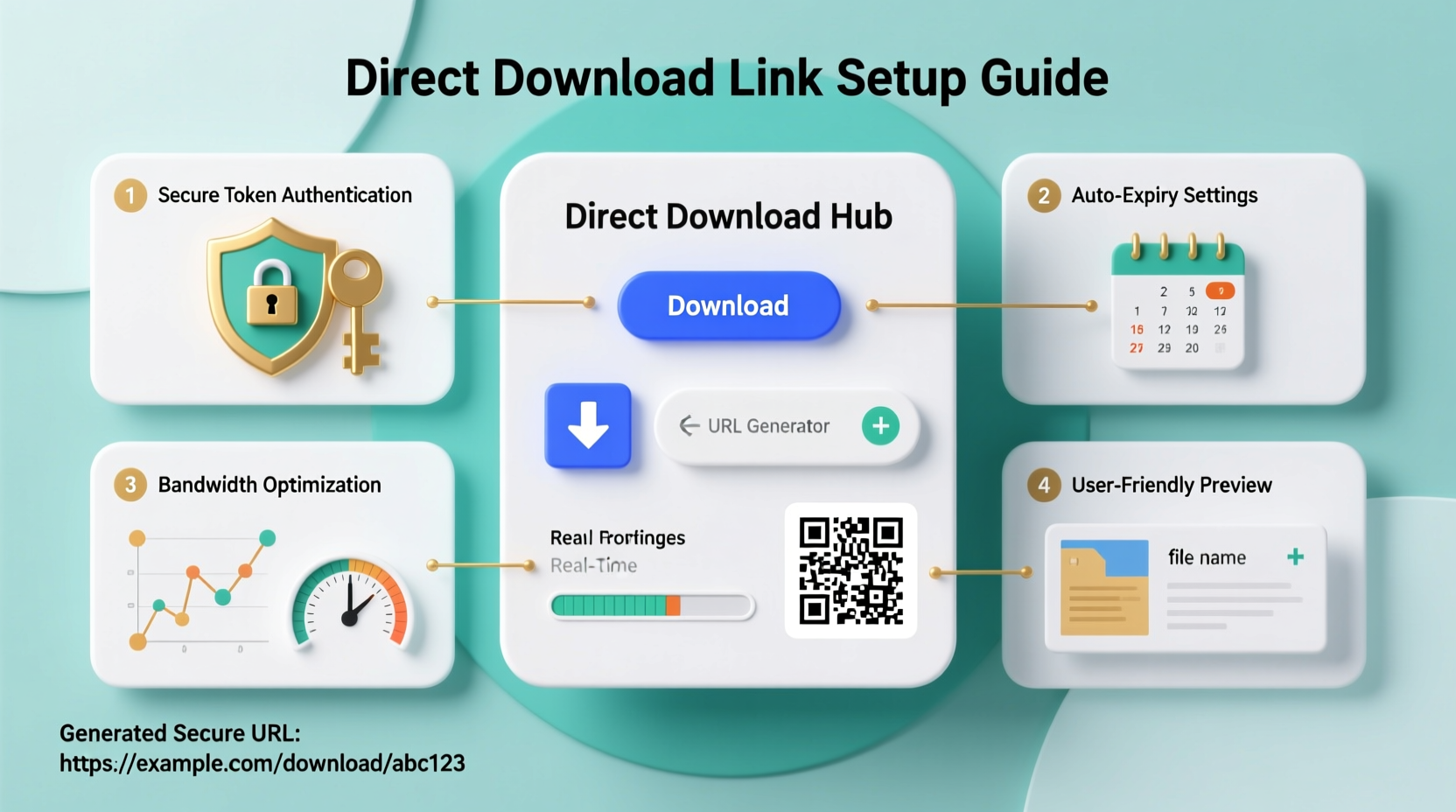In today’s digital-first environment, delivering files efficiently is critical—whether you're distributing software, documents, media, or resources. Direct download links eliminate unnecessary steps, reduce friction, and improve the user experience by allowing instant access. However, poorly implemented links can lead to broken downloads, security risks, or bandwidth overages. The key lies in strategic planning, technical precision, and ongoing optimization.
This guide explores proven methods to deploy direct download links that are fast, reliable, and scalable—ensuring users get what they need without delay or confusion.
Understanding Direct Download Links

A direct download link points precisely to a file's location on a server, bypassing intermediate pages or scripts. Unlike hosted file-sharing services (e.g., Google Drive or Dropbox), which often require login prompts or preview screens, direct links trigger an immediate download when clicked.
These links work best when hosted on dedicated infrastructure with controlled access, proper headers, and optimized delivery mechanisms. They are commonly used for:
- Software installers and updates
- Digital product deliveries (e-books, templates, assets)
- Internal company document distribution
- Media files for developers or content creators
The advantage? No third-party dependencies, full control over branding, and faster load times.
Step-by-Step Guide to Implementing Direct Downloads
Setting up effective direct download links involves more than uploading a file and copying its URL. Follow this structured approach to ensure reliability and performance.
- Choose the Right Hosting Environment
Select a hosting provider or CDN (Content Delivery Network) that supports high-bandwidth file delivery. Avoid shared hosting for large or frequently downloaded files. - Upload Files to a Publicly Accessible Directory
Place your file in a folder like/downloads/or/assets/, ensuring correct permissions (e.g., 644 for files, 755 for directories). - Generate the Absolute URL
Construct the full link using your domain:https://yoursite.com/downloads/ebook.pdf. - Set Proper HTTP Headers
Configure your server to send appropriate headers such asContent-Disposition: attachment; filename=\"ebook.pdf\"to force download instead of in-browser preview. - Test Across Devices and Browsers
Verify functionality on Chrome, Firefox, Safari, mobile browsers, and various network conditions. - Monitor Usage and Bandwidth
Use analytics tools or server logs to track downloads and anticipate traffic spikes.
Best Practices for Security and Performance
Direct links are powerful but vulnerable if mismanaged. Unauthorized access, hotlinking, and server overload are real concerns. Apply these safeguards to maintain integrity.
| Practice | Why It Matters | Implementation Example |
|---|---|---|
| Use Tokenized URLs | Prevents public exposure and unauthorized redistribution | https://yoursite.com/download?token=abc123&exp=1735689000 |
| Enable Hotlink Protection | Stops other sites from embedding your file and consuming bandwidth | Apache: mod_rewrite rules blocking external referrers |
| Leverage a CDN | Speeds up global delivery and reduces origin server load | Cloudflare, AWS CloudFront, or Bunny.net |
| Set Expiration Rules | Limits access window for sensitive or time-bound files | One-time-use links valid for 24 hours |
“Direct downloads should be treated like any other digital asset—secured, monitored, and optimized. A single uncontrolled link can cost thousands in bandwidth or expose confidential data.” — Lena Patel, DevOps Engineer at TechFlow Systems
Real-World Example: Launching a Free Design Toolkit
A mid-sized design agency wanted to distribute a 1.2GB resource pack to email subscribers. Initially, they used a generic cloud storage link, resulting in slow downloads and complaints about interrupted transfers.
They switched to a direct download strategy:
- Migrated the file to a dedicated subdomain (
assets.designco.io) behind a CDN - Generated one-time-use tokens via their email platform
- Configured Nginx to enforce
Content-Disposition: attachment - Added download tracking through lightweight logging
Result: 98% successful downloads, average speed increase of 3x, and zero server crashes during peak traffic. User satisfaction improved significantly, with many commenting on the “seamless” experience.
Checklist for Launching Direct Download Links
Before going live, verify each of these items to avoid common pitfalls:
- ✅ File is compressed and optimized (e.g., ZIP, minified PDF)
- ✅ Server is configured to serve correct MIME types
- ✅
Content-Dispositionheader forces download - ✅ Link uses HTTPS for security
- ✅ Hotlink protection is enabled
- ✅ Download limits or token expiration are set (if needed)
- ✅ Mobile and desktop compatibility tested
- ✅ Analytics or logging in place to monitor usage
Frequently Asked Questions
Can I password-protect a direct download link?
Yes, but not through the link itself. Use server-level authentication (like .htaccess on Apache), integrate with an application layer (e.g., PHP/Node.js), or generate time-limited signed URLs via cloud storage APIs (e.g., AWS S3 pre-signed URLs).
Why does my file open in the browser instead of downloading?
This happens when the server doesn’t send the correct Content-Disposition: attachment header. You can fix this by configuring your web server or using a script to proxy the download with proper headers.
How do I prevent people from sharing my direct download link?
Implement token-based access with short expiration windows. Each authorized user receives a unique URL that becomes invalid after use or within a set timeframe. Combine this with IP rate limiting for added control.
Optimizing User Experience
A technically sound download link means little if users don’t understand how to use it. Clarity is part of the strategy.
Provide context near the download button: mention file size, format, and expected download time. For large files, consider adding a progress bar or estimated completion time via JavaScript.
Also, offer alternative formats when possible. If someone needs a lightweight version of a 500MB video template, provide a 720p cutdown alongside the full 4K version.
Conclusion
Direct download links are a cornerstone of efficient digital distribution. When implemented thoughtfully, they remove friction, enhance professionalism, and scale with your audience. The difference between a frustrating wait and a smooth experience often comes down to server configuration, security practices, and attention to detail.
Start by auditing your current file-sharing methods. Replace clunky workflows with streamlined, direct links backed by smart policies. Whether you're serving hundreds or millions of downloads, the principles remain the same: speed, security, and simplicity.









 浙公网安备
33010002000092号
浙公网安备
33010002000092号 浙B2-20120091-4
浙B2-20120091-4
Comments
No comments yet. Why don't you start the discussion?